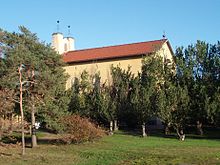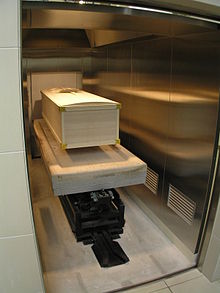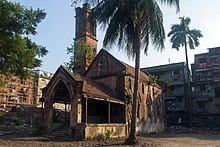Crematorium
|
Read other articles:

Sceaux 行政国 フランス地域圏 (Région) イル=ド=フランス地域圏県 (département) オー=ド=セーヌ県郡 (arrondissement) アントニー郡小郡 (canton) 小郡庁所在地INSEEコード 92071郵便番号 92330市長(任期) フィリップ・ローラン(2008年-2014年)自治体間連合 (fr) メトロポール・デュ・グラン・パリ人口動態人口 19,679人(2007年)人口密度 5466人/km2住民の呼称 Scéens地理座標 北緯48度46�…

Земская почтаУезды Алатырский Александрийский Ананьевский Ардатовский Арзамасский Аткарский Ахтырский Балашовский Бахмутский Бежецкий Белебеевский Белозерский Бердянский Бобровский Богородский Богучарский Борисоглебский Боровичский Бронницкий Бугульминский Бугу…

Artikel ini membutuhkan rujukan tambahan agar kualitasnya dapat dipastikan. Mohon bantu kami mengembangkan artikel ini dengan cara menambahkan rujukan ke sumber tepercaya. Pernyataan tak bersumber bisa saja dipertentangkan dan dihapus.Cari sumber: Gelar kehormatan Islam – berita · surat kabar · buku · cendekiawan · JSTOR (April 2022) Bagian dari seri IslamFikih Ibadah Syahadat Salat Rakaat Kiblat Turbah Salat sunah (Salat tahajudSalat tarawih) Salat witir…

American college football season 2015 Michigan Wolverines footballCitrus Bowl championCitrus Bowl, W 41–7 vs. FloridaConferenceBig Ten ConferenceDivisionEast DivisionRankingCoachesNo. 11APNo. 12Record10–3 (6–2 Big Ten)Head coachJim Harbaugh (1st season)Offensive coordinatorTim Drevno (1st season)Offensive schemePro-styleDefensive coordinatorD. J. Durkin (1st year), Greg Mattison (bowl game)Base defense4–3MVPJehu ChessonCaptains Joe Bolden (Senior year) …

习近平 习近平自2012年出任中共中央总书记成为最高领导人期间,因其废除国家主席任期限制、开启总书记第三任期、集权统治、公共政策与理念、知识水平和自述经历等争议,被中国大陸及其他地区的民众以其争议事件、个人特征及姓名谐音创作负面称呼,用以恶搞、讽刺或批评习近平。对习近平的相关负面称呼在互联网上已经形成了一种活跃、独特的辱包亚文化。 权力類 �…

Andreas Brehme Andreas Brehme all'Inter nella stagione 1989-1990 Nazionalità Germania Ovest Germania (dal 1990) Altezza 176 cm Peso 75 kg Calcio Ruolo Allenatore (ex difensore, centrocampista) Termine carriera 1º luglio 1998 - giocatore9 febbraio 2006 - allenatore CarrieraGiovanili 1965-1978 Barmbek-UhlenhorstSquadre di club1 1978-1980 Barmbek-Uhlenhorst66 (10)1980-1981 Saarbrücken36 (3)1981-1986 Kaiserslautern154 (34)1986-1988 Bayern Monaco63 (7)1988-1992 I…

تي كي إس تي كي إس النوع تانكت بلد الأصل بولندا فترة الاستخدام بداية:1931 الحروب غزو بولندا تاريخ الصنع صنع 1931 - 1939 الكمية المصنوعة 575 المواصفات الوزن 2.6 طن الطول 2.58 م العرض 1.78 م الارتفاع 1.32 م الطاقم 2 الدرع 4 – 10 ملم السلاح الأساسي رشاش 7.92 ملم السرعة 46-40 كم/س تعديل مصدري - ت�…
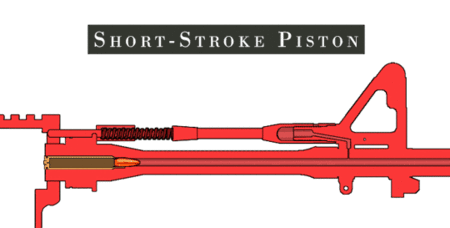
Designated marksman rifle FN FNAR TypeDesignated marksman riflePlace of originBelgiumProduction historyManufacturerFN HerstalProduced2008–present [citation needed]Variants FN FNAR-H (Heavy Barrel)[1] FN FNAR-L (Light Barrel)[1] SpecificationsMass 9 lb (4.1 kg) (FNAR-L)[1] 10 lb (4.5 kg) (FNAR-H)[1] Length41.5 in (105 cm)[1]Barrel length20 in (51 cm)[1]Cartridge7.62×51mm NATOActionSho…

فرط التحسس من النمط الأول معلومات عامة الاختصاص علم المناعة من أنواع فرط التحسس تعديل مصدري - تعديل صورة بالمجهر الإلكتروني الماسح لحبوب الطلع، وهي مولدات حساسية شائعة فرط التحسس من النمط الأول (بالإنجليزية: Type I hypersensitivity) أو فرط التحسس الفوري أو فرط الحساسية الم�…

1994 European Athletics Indoor ChampionshipsTrack events60 mmenwomen200 mmenwomen400 mmenwomen800 mmenwomen1500 mmenwomen3000 mmenwomen60 m hurdlesmenwomen3000 m walkwomen5000 m walkmenField eventsHigh jumpmenwomenPole vaultmenLong jumpmenwomenTriple jumpmenwomenShot putmenwomenCombined eventsPentathlonwomenHeptathlonmenvte The women's triple jump event at the 1994 European Athletics Indoor Championships was held in Palais Omnisports de Paris-Bercy on 12 and 13 March.[1] Medalists Gold S…

SMP Negeri 8 SurabayaInformasiDidirikan1955JenisSekolah NegeriAkreditasiAKepala SekolahDrs. Sudjasmi Marginono, M.SiJumlah kelas20 (Termasuk Reguler + Terbuka)Rentang kelasVII, VIII, IXKurikulumKurikulum 2013Jumlah siswa875AlamatLokasiJl. Bunguran 15-17 Pabean Cantian, Surabaya, Jawa TimurTel./Faks.(031) 3523531Moto SMP Negeri (SMPN) 8 Surabaya, merupakan salah satu sekolah menengah pertama negeri yang ada di Kota Surabaya Provinsi Jawa Timur, Indonesia. Sekolah ini berada di Keca…

Japanese newspaper Yomiuri ShimbunFront page of the Yomiuri Shimbun from July 17, 2006, following the adoption of UN Security Council Resolution 1695 two days priorTypeDaily newspaperFormatBlanket (54.6 by 40.65 centimeters (21.50 in × 16.00 in))Owner(s)The Yomiuri Shimbun HoldingsFoundedNovember 2, 1874; 149 years ago (1874-11-02)[1]Political alignmentCenter-right[2] to right-wing[3]Conservative[4]Moderate conservative[5]…

Yoshino LineOverviewOwner Kintetsu RailwayLine numberFLocaleNara PrefectureTerminiKashihara-JingūmaeYoshinoStations16Color on map (#008446)ServiceTypeCommuter railSystemKintetsu RailwayOperator(s)Kintetsu RailwayDepot(s)Muda (branch depot of Furuichi Inspection Depot)HistoryOpened25 October 1912; 111 years ago (1912-10-25)Last extension25 March 1928; 96 years ago (1928-03-25)TechnicalLine length25.2 km (15.7 mi)Number of trac…

Sweet banana pancake Bánh chuốiA slice of bánh chuối nướngTypeRice cake or bread puddingCourseDessert, snackPlace of originVietnamRegion or stateSoutheast AsiaMain ingredientsBananas or plantains, coconut milk, sugar, white bread, shredded young coconut, condensed milk, butter, egg, vanilla extract Bánh chuối steamed with coconut milk Steamed bánh chuối served with peanuts This article needs additional citations for verification. Please help improve this article by adding citation…

Gay bathhouse in New York City, United StatesContinental BathsEarly ad for the Continental BathsAlternative namesPlato's RetreatGeneral informationTypeGay bathhouseAddressAnsonia Hotel, New York CityCountryUnited StatesCoordinates40°46′48″N 73°58′55″W / 40.7801°N 73.982°W / 40.7801; -73.982Opened1968 (1968)Closed1976 (1976)ManagementSteve OstrowOther informationFacilitiesPool, dance floor, fountains, private rooms, orgy rooms, saunas, games room, res…

Ritratto di Amedeo Avogadro Lorenzo Romano Amedeo Carlo Avogadro, conte di Quaregna e Cerreto (Torino, 9 agosto 1776 – Torino, 9 luglio 1856), è stato un fisico e chimico italiano. Disegno del busto di Amedeo Avogadro realizzato da Luigi Cauda e collocato nel loggiato del Rettorato dell'Università di Torino È famoso soprattutto per i suoi contributi alla teoria molecolare, culminata nella legge conosciuta come Legge di Avogadro secondo la quale volumi uguali di gas diversi alla stessa tempe…
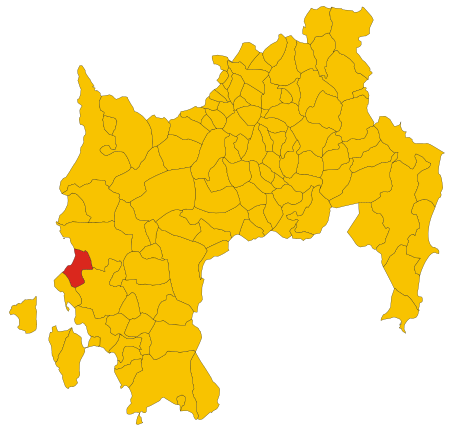
Gonnesa الإحداثيات 39°15′58″N 8°28′16″E / 39.266°N 8.471°E / 39.266; 8.471 تقسيم إداري البلد إيطاليا[1] التقسيم الأعلى مقاطعة كاربونيا-إغليسياس (10 مايو 2005–3 فبراير 2016)مقاطعة جنوب سردينيا [لغات أخرى] (4 فبراير 2016–)مقاطعة كالياري (–9 مايو 2005) خصائص جغرافية…

Mexican cyclist In this Spanish name, the first or paternal surname is Verdugo and the second or maternal family name is Osuna. Yuli VerdugoYuli Verdugo (2018)Personal informationFull nameYuli Paola Verdugo OsunaBorn (1997-06-29) 29 June 1997 (age 27)La Paz, Baja California Sur, Mexico[1]Team informationDisciplineTrack cycling Medal record Women's track cycling Representing Mexico Pan American Games 2019 Lima Keirin Pan American Championships 2016 Aguascalientes T…

Racehorse Moonlight CloudRacing silks of George StrawbridgeSireInvincible SpiritGrandsireGreen DesertDamVenturaDamsireSpectrumSexMareFoaled5 March 2008CountryGreat BritainColourBayBreederGeorge StrawbridgeOwnerGeorge StrawbridgeTrainerFreddy HeadRecord18: 11-2-0Earnings£1,232,525[1]Major winsPrix Imprudence (2011)Prix de la Porte Maillot (2011, 2013)Prix Maurice de Gheest (2011, 2012, 2013)Prix du Palais-Royal (2012)Prix du Moulin (2012)Prix Jacques Le Marois (2013)Prix de la Forêt (20…

Artikel ini sebatang kara, artinya tidak ada artikel lain yang memiliki pranala balik ke halaman ini.Bantulah menambah pranala ke artikel ini dari artikel yang berhubungan atau coba peralatan pencari pranala.Tag ini diberikan pada Desember 2023. Ini adalah daftar maskapai penerbangan yang saat ini beroperasi di Sierra Leone. Maskapai penerbangan IATA ICAO Tanda panggil Mulaiberoperasi Catatan Fly 6ix 2010 Pan African Air Services PFN PANAFRICAN Paramount Airlines Sierra National Airlines LJ SLA …




